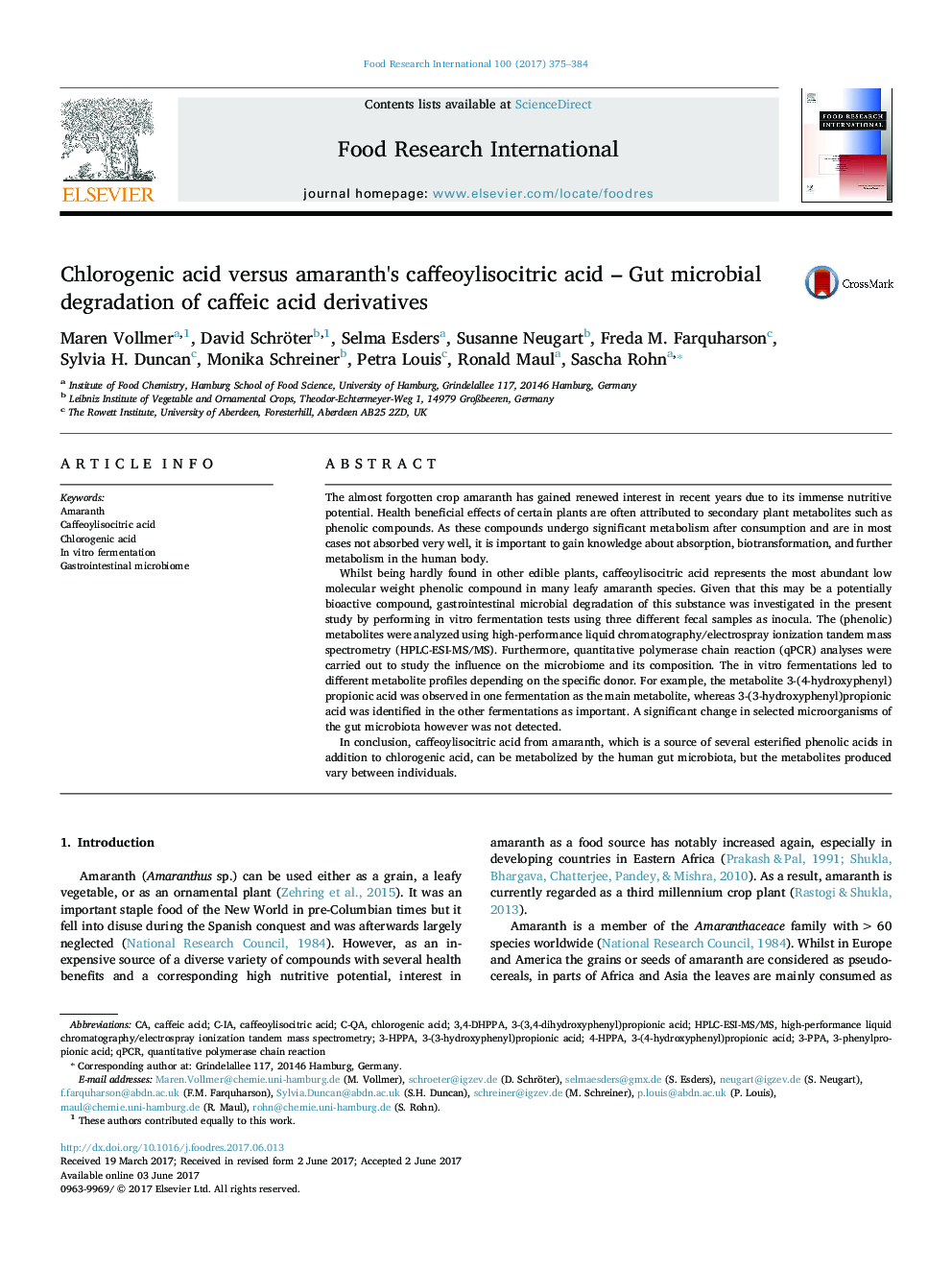| کد مقاله | کد نشریه | سال انتشار | مقاله انگلیسی | نسخه تمام متن |
|---|---|---|---|---|
| 5767733 | 1628451 | 2017 | 10 صفحه PDF | دانلود رایگان |

- Microbial degradation of caffeoylisocitric acid from amaranth was characterized.
- Metabolites of caffeoylisocitric acid and chlorogenic acid fermentations are very similar.
- Composition of the microbiota was not affected.
The almost forgotten crop amaranth has gained renewed interest in recent years due to its immense nutritive potential. Health beneficial effects of certain plants are often attributed to secondary plant metabolites such as phenolic compounds. As these compounds undergo significant metabolism after consumption and are in most cases not absorbed very well, it is important to gain knowledge about absorption, biotransformation, and further metabolism in the human body.Whilst being hardly found in other edible plants, caffeoylisocitric acid represents the most abundant low molecular weight phenolic compound in many leafy amaranth species. Given that this may be a potentially bioactive compound, gastrointestinal microbial degradation of this substance was investigated in the present study by performing in vitro fermentation tests using three different fecal samples as inocula. The (phenolic) metabolites were analyzed using high-performance liquid chromatography/electrospray ionization tandem mass spectrometry (HPLC-ESI-MS/MS). Furthermore, quantitative polymerase chain reaction (qPCR) analyses were carried out to study the influence on the microbiome and its composition. The in vitro fermentations led to different metabolite profiles depending on the specific donor. For example, the metabolite 3-(4-hydroxyphenyl)propionic acid was observed in one fermentation as the main metabolite, whereas 3-(3-hydroxyphenyl)propionic acid was identified in the other fermentations as important. A significant change in selected microorganisms of the gut microbiota however was not detected.In conclusion, caffeoylisocitric acid from amaranth, which is a source of several esterified phenolic acids in addition to chlorogenic acid, can be metabolized by the human gut microbiota, but the metabolites produced vary between individuals.
256
Journal: Food Research International - Volume 100, Part 3, October 2017, Pages 375-384